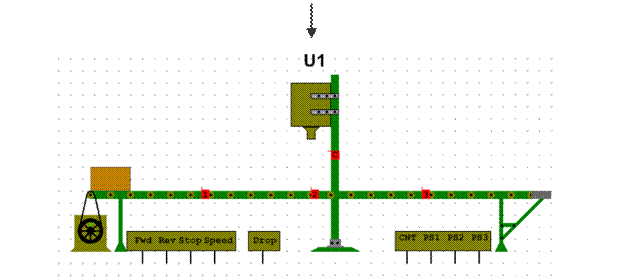Namespace and type names
Several contexts in a C# program require a namespace-name or a type-name to be specified. namespace-name: type-name: namespace-or-type-name: A namespace-name is a namespace-or-type-name that refers to a namespace. Following resolution as described below, the namespace-or-type-name of a namespace-name must refer to a namespace, or otherwise a compile-time error occurs. No type arguments (§4.4.1) can be present in a namespace-name (only types can have type arguments). A type-name is a namespace-or-type-name that refers to a type. Following resolution as described below, the namespace-or-type-name of a type-name must refer to a type, or otherwise a compile-time error occurs. If the namespace-or-type-name is a qualified-alias-member its meaning is as described in §9.7. Otherwise, a namespace-or-type-name has one of four forms: · I · I<A1,..., AK> · N.I · N.I<A1,..., AK> where I is a single identifier, N is a namespace-or-type-name and <A1,..., AK> is an optional type-argument-list. When no type-argument-list is specified, consider K to be zero. The meaning of a namespace-or-type-name is determined as follows: · If the namespace-or-type-name is of the form I or of the form I<A1,..., AK>: o If K is zero and the namespace-or-type-name appears within a generic method declaration (§10.6) and if that declaration includes a type parameter (§10.1.3) with name I, then the namespace-or-type-name refers to that type parameter. o Otherwise, if the namespace-or-type-name appears within a type declaration, then for each instance type T (§10.3.1), starting with the instance type of that type declaration and continuing with the instance type of each enclosing class or struct declaration (if any): · If K is zero and the declaration of T includes a type parameter with name I, then the namespace-or-type-name refers to that type parameter. · Otherwise, if the namespace-or-type-name appears within the body of the type declaration, and T or any of its base types contain a nested accessible type having name I and K type parameters, then the namespace-or-type-name refers to that type constructed with the given type arguments. If there is more than one such type, the type declared within the more derived type is selected. Note that non-type members (constants, fields, methods, properties, indexers, operators, instance constructors, destructors, and static constructors) and type members with a different number of type parameters are ignored when determining the meaning of the namespace-or-type-name. o If the previous steps were unsuccessful then, for each namespace N, starting with the namespace in which the namespace-or-type-name occurs, continuing with each enclosing namespace (if any), and ending with the global namespace, the following steps are evaluated until an entity is located: · If K is zero and I is the name of a namespace in N, then: o If the location where the namespace-or-type-name occurs is enclosed by a namespace declaration for N and the namespace declaration contains an extern-alias-directive or using-alias-directive that associates the name I with a namespace or type, then the namespace-or-type-name is ambiguous and a compile-time error occurs. o Otherwise, the namespace-or-type-name refers to the namespace named I in N. · Otherwise, if N contains an accessible type having name I and K type parameters, then: o If K is zero and the location where the namespace-or-type-name occurs is enclosed by a namespace declaration for N and the namespace declaration contains an extern-alias-directive or using-alias-directive that associates the name I with a namespace or type, then the namespace-or-type-name is ambiguous and a compile-time error occurs. o Otherwise, the namespace-or-type-name refers to the type constructed with the given type arguments. · Otherwise, if the location where the namespace-or-type-name occurs is enclosed by a namespace declaration for N: o If K is zero and the namespace declaration contains an extern-alias-directive or using-alias-directive that associates the name I with an imported namespace or type, then the namespace-or-type-name refers to that namespace or type. o Otherwise, if the namespaces imported by the using-namespace-directives of the namespace declaration contain exactly one type having name I and K type parameters, then the namespace-or-type-name refers to that type constructed with the given type arguments. o Otherwise, if the namespaces imported by the using-namespace-directives of the namespace declaration contain more than one type having name I and K type parameters, then the namespace-or-type-name is ambiguous and an error occurs. o Otherwise, the namespace-or-type-name is undefined and a compile-time error occurs. · Otherwise, the namespace-or-type-name is of the form N.I or of the form N.I<A1,..., AK>. N is first resolved as a namespace-or-type-name. If the resolution of N is not successful, a compile-time error occurs. Otherwise, N.I or N.I<A1,..., AK> is resolved as follows: o If K is zero and N refers to a namespace and N contains a nested namespace with name I, then the namespace-or-type-name refers to that nested namespace. o Otherwise, if N refers to a namespace and N contains an accessible type having name I and K type parameters, then the namespace-or-type-name refers to that type constructed with the given type arguments. o Otherwise, if N refers to a (possibly constructed) class or struct type and N or any of its base classes contain a nested accessible type having name I and K type parameters, then the namespace-or-type-name refers to that type constructed with the given type arguments. If there is more than one such type, the type declared within the more derived type is selected. Note that if the meaning of N.I is being determined as part of resolving the base class specification of N then the direct base class of N is considered to be object (§10.1.4.1). o Otherwise, N.I is an invalid namespace-or-type-name, and a compile-time error occurs. A namespace-or-type-name is permitted to reference a static class (§10.1.1.3) only if · The namespace-or-type-name is the T in a namespace-or-type-name of the form T.I, or · The namespace-or-type-name is the T in a typeof-expression (§7.5.11) of the form typeof(T).
|




